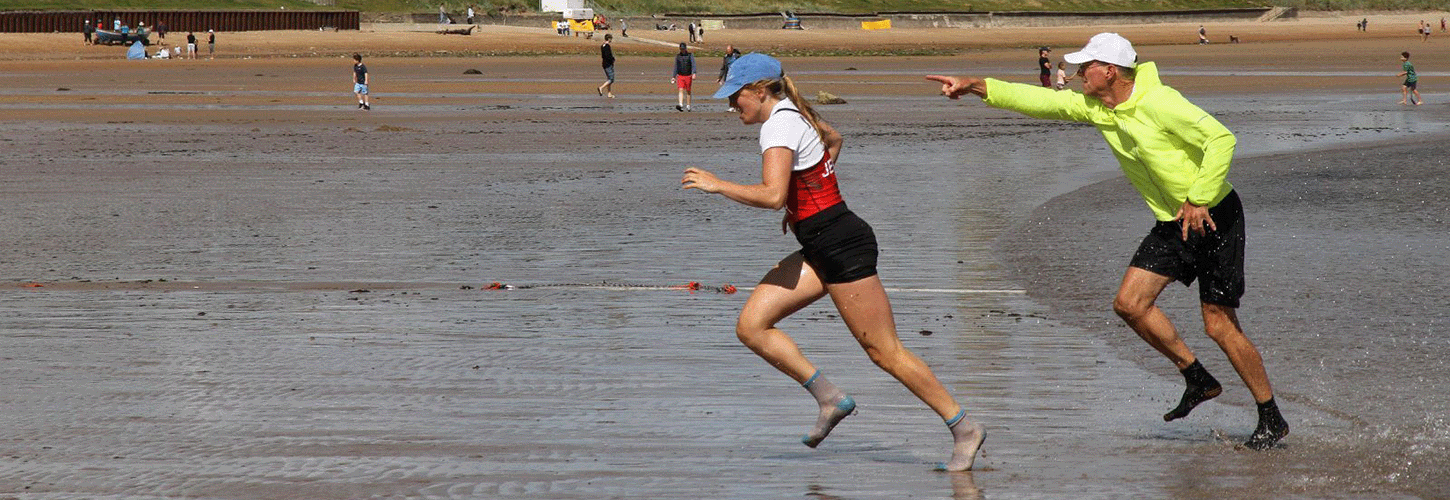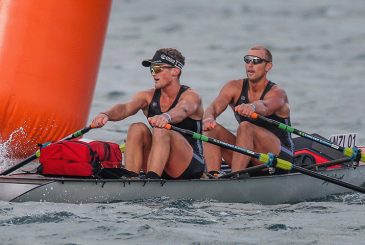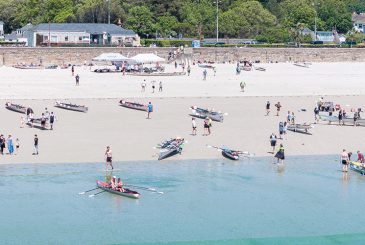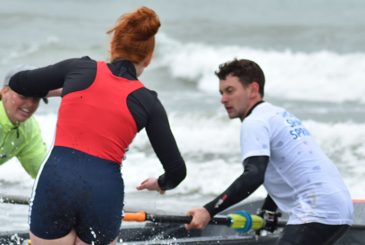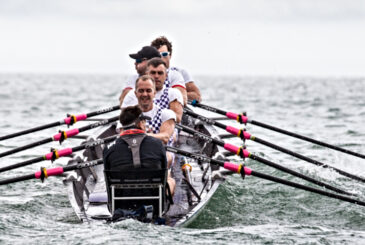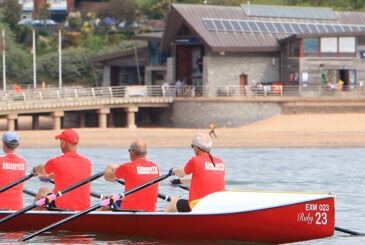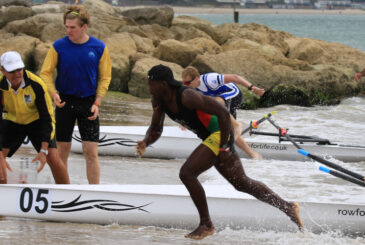If you’re an experienced flat-water rower who’s dipping your toes into the world of coastal sculling, you’re in for a completely different kind of challenge – including what you wear. While your current kit may have served you well on the river or lake, coastal conditions bring a new set of demands: unpredictable weather, salt water, waves, cold spray, sandy launches, and prolonged exposure to wind and sun.
Experienced coastal sculler Jerry Owen has put together this essential guide to how coastal gear differs from what you’re used to – and what you should be wearing to stay comfortable, safe, and efficient on the sea.
Expect to get wet – and stay wet
The most important mindset shift for flat-water rowers is this: in coastal sculling you will get wet. Waves can break over the boat, launches often involve wading, and even calm days come with salt spray. This means materials and layers matter more than ever.
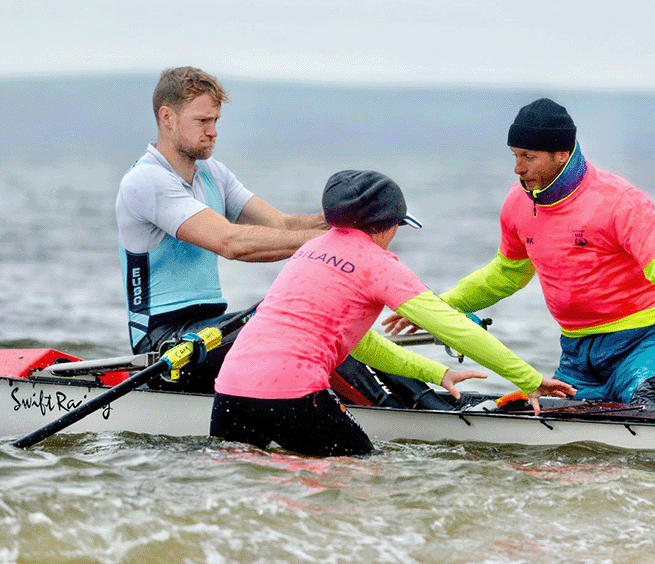
Swap cotton for quick-dry everything
In flat-water rowing, hoodies and cotton t-shirts are fine – not in coastal sculling. Every layer should be quick-drying and, ideally, saltwater-resistant. Technical fabrics like polyester blends, Merino wool, or neoprene will keep you warm when wet and dry quickly between sessions.
Key tip
Avoid cotton at all costs. Once wet, it stays wet – and cold.
Layering: From optional to essential
You’ve probably learned to dress light for racing and training on flat water. Coastal conditions demand more flexibility. The wind chill off the sea, even on warm days, can bite hard – especially during long races or training rows.
- Base layer: Start with a tight-fitting, moisture-wicking top. Long sleeves are often better than short, even in mild conditions.
- Mid layer: In colder months, add a thermal or fleece rowing top. Make sure it’s slim enough to allow full mobility.
- Outer layer: Here’s where things really differ from river rowing. A windproof, splash-resistant jacket or cag is a coastal essential. Unlike your usual gilet, this layer needs to deflect salt spray and wind from all directions.
Rethinking the bottom half
You might have your go-to rowing leggings perfected for river sessions, but coastal sculling demands gear that can handle cold water, wind, and prolonged exposure to the elements.
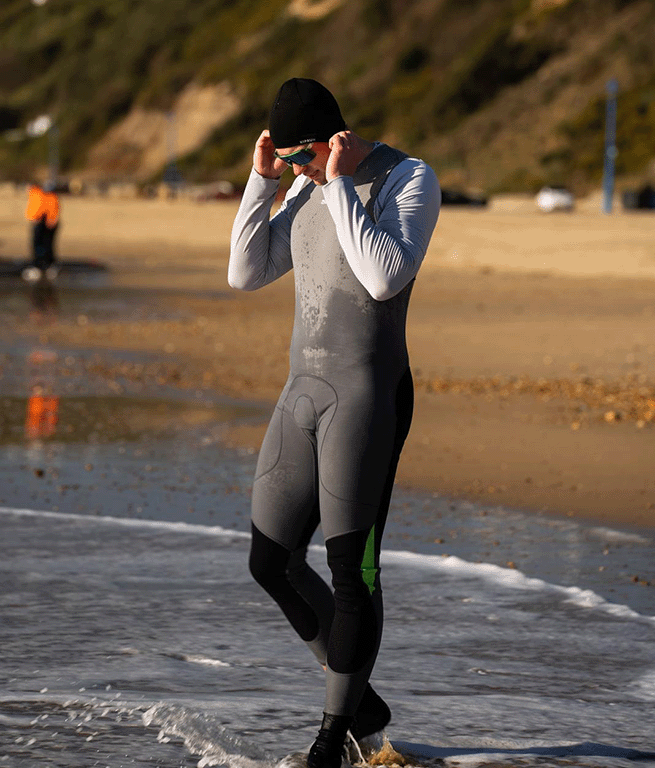
- Leggings: Technical rowing leggings made from quick-drying, breathable fabric are still a solid option, especially in milder conditions. Look for versions with a thermal lining for added warmth when the temperature drops. The key difference is that they need to cope with being wet for long stretches without making you cold or heavy.
- Neoprene longjohns: These are a staple for many coastal rowers and an excellent upgrade for those used to flat-water gear. Neoprene longjohns – essentially sleeveless full-length wetsuits – offer superior insulation and water resistance. They keep your legs and lower back warm even when soaked, and the material stops any windchill sapping away your energy on cold days. The sleeveless cut also ensures your shoulders and arms can move freely.
Longjohns are especially valuable in rougher conditions, surf zones, or colder months, where you’ll likely get repeatedly drenched. The extra durability and warmth also help in longer sessions, where staying comfortable makes a big difference in performance and recovery.
What to wear on your feet for coastal sculling
In coastal sculling, you’re often launching through sand, stones, or surf – and you might be standing in cold water before you’ve even started the session.
- Neoprene booties or water shoes: These are a solid choice for protection, warmth, and grip. They’re designed to handle wet conditions and can be worn straight into the boat after a beach or slipway launch. Look for snug-fitting options that won’t get heavy or slippery when wet. Also, be careful not to get a bootie with too large a sole. These can be tricky to fit into the boat shoes and – more of an issue – to get out of the shoes if you capsize!
- Waterproof socks or regular socks (season-dependent): Regular socks can still work in warmer months, especially if the water is shallow and temperatures are mild. However, if you launch through rocky areas or wade deeper, they won’t offer much protection. For cooler or rougher conditions, waterproof socks – often made from neoprene or with a membrane lining – offer a good compromise between warmth and simplicity if you’re not wearing full water shoes.
- Drainage and fit really matter: Whatever footwear you choose, ensure it drains well and stays secure. A poorly fitting shoe or a heavy, waterlogged sock can quickly become a distraction.
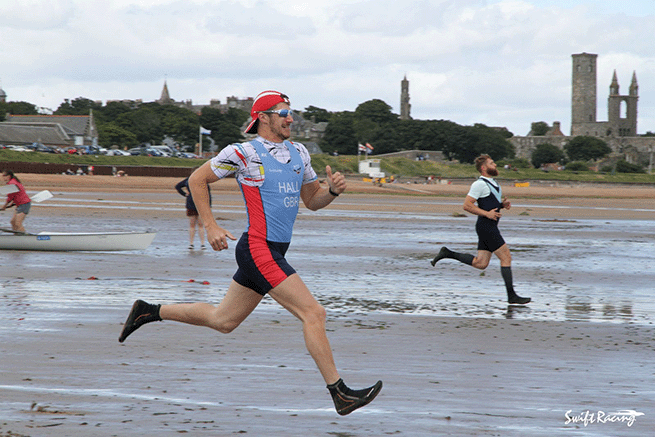
Visibility=safety
On the coast, you’re more exposed to other boats, including larger vessels.
Many coastal clubs and competitions will require you to wear high-viz kit for safety. Even when not mandated, it’s a wise choice for visibility during training and racing.
After your outing
Bring a dry bag with spare layers, a towel, water, and your phone in a waterproof case. Salt and sand are hard on gear – rinse everything after your session, including yourself.
Finally, make sure you bring plenty of changes of everything. As soon as you get off the water, take off any wet kit and get warm again



